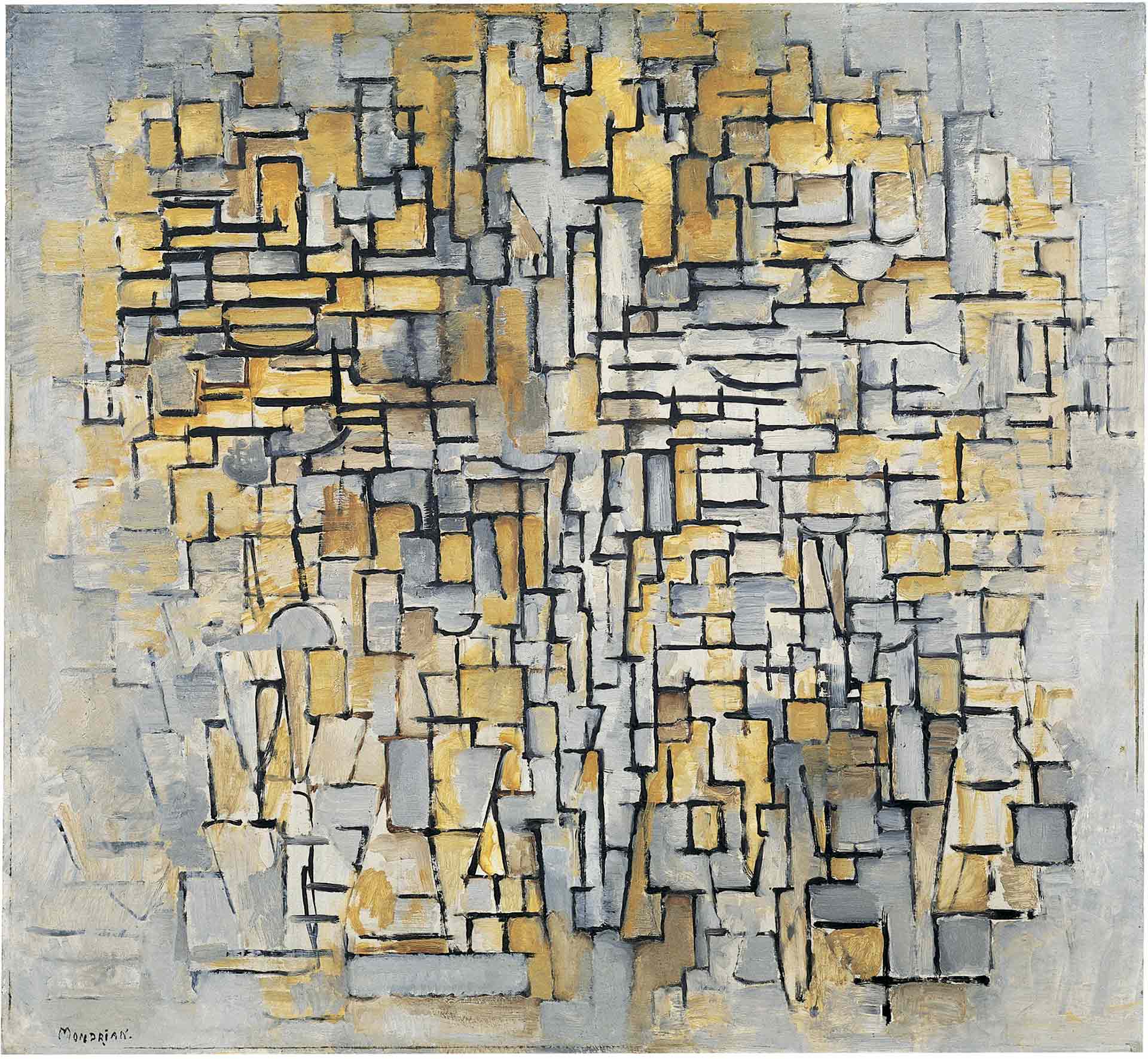
Tableau No. 2/Composition No. VII, 1913
Piet Mondrian
Tableau No. 2/Composition No. VII, 1913
Oil on canvas
104.4 x 113.6 cm
Solomon R. Guggenheim Museum, New York
Solomon R. Guggenheim Founding Collection 49.1228
© 2016 Mondrian/Holtzman Trust c/o HCR International Virginia
“For in nature the surface of things is beautiful but its imitation is lifeless. The objects give us everything, but their depiction gives us nothing” [1]
For more than a decade after graduating from art school, Piet Mondrian (b. 1872, Amersfoort, The Netherlands; d. 1944, New York City) created drawings and paintings that focused on landscapes and nature. In 1911 Mondrian visited an Amsterdam exhibition of Cubist paintings by Georges Braque and Pablo Picasso and was inspired to go to Paris, where he began to develop an independent abstract style. Seeking to refine the rhythms of what he saw, Mondrian began drawing the area in which he lived. After sustained work and many adjustments, these initial compositions evolved into flat planes of interlocking rectangles that no longer showed objects. Although Mondrian’s sources exist in the natural world, his images are reduced to the essentials.
Tableau No. 2/Composition No. VII, painted a year after his arrival in 1912, exemplifies Mondrian’s new approach. Mondrian broke down his subject—in this case a tree—into interlocking black lines and planes of color. He also limited his palette to close-valued ochre and gray tones that recall Cubist canvases.
Mondrian went beyond the Parisian Cubists’ degree of abstraction. His subjects are less recognizable, in part because he avoided any suggestion of volume, and, unlike the Cubists, who rooted their compositions at the bottom of the canvas in order to suggest a figure subject to gravity, Mondrian’s scaffolding fades at the painting’s edges. In works such as Composition 8, based on studies of Parisian building facades, Mondrian went even further in his refusal of illusionism and the representation of volume.
Throughout his life, Mondrian continued to move toward greater abstraction. His goal was to discern an underlying structure in the world by means of the fewest, clearest elements. He sought to remove all clutter, paring away everything inessential[2], eventually even rejecting diagonal lines. Like many pioneers of abstraction, Mondrian’s impetus was largely spiritual. He aimed to distill the real world to its pure essence, to represent the dichotomies of the universe in eternal tension. To achieve this he focused on stability, universality, and spirituality—through balancing horizontal and vertical strokes.
Preguntas
Show: Tableau No. 2/Composition No. VII, 1913
Describe this painting as carefully as possible. Be sure to include colors, lines, shapes, composition, and paint application in your description.
This painting was derived from Mondrian’s study of a tree. Are there qualities in this painting that seem to reference the original subject, or have all traces of its source been eliminated? Explain your response.
